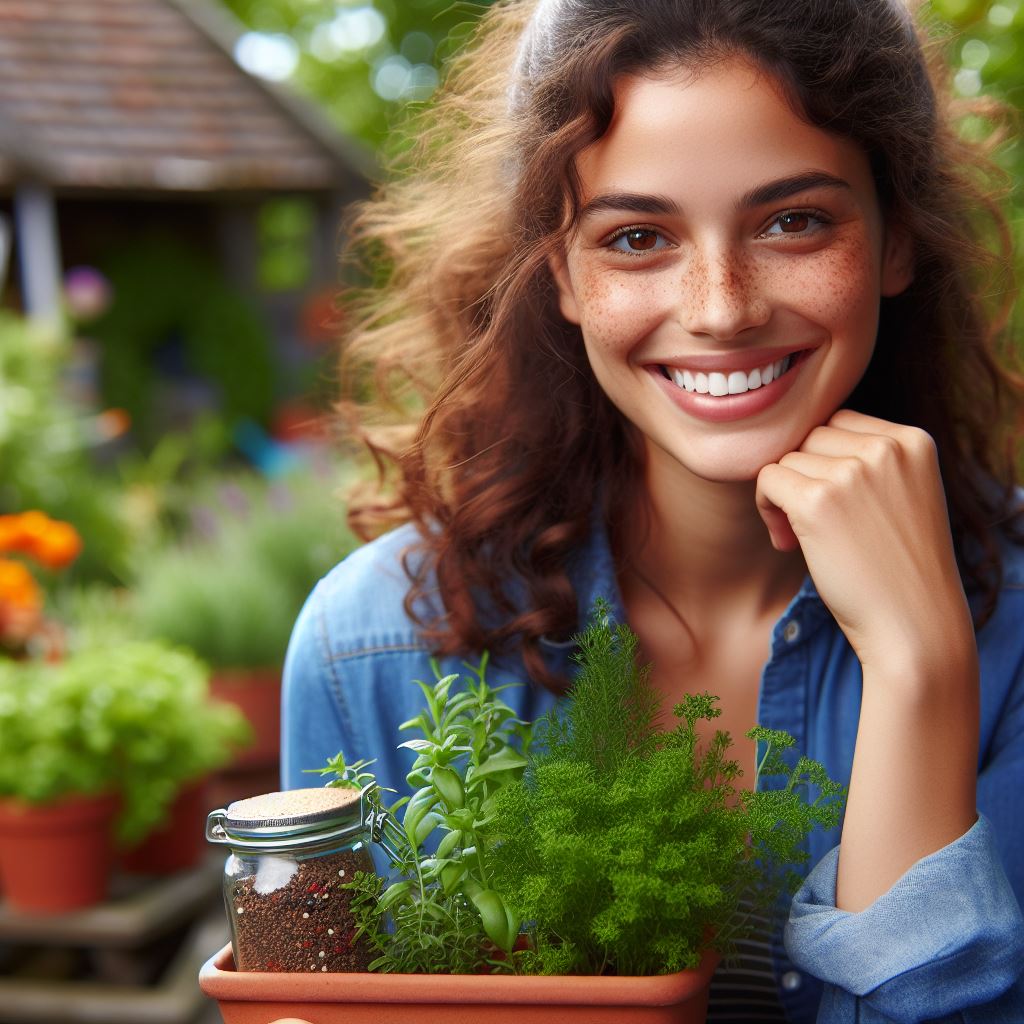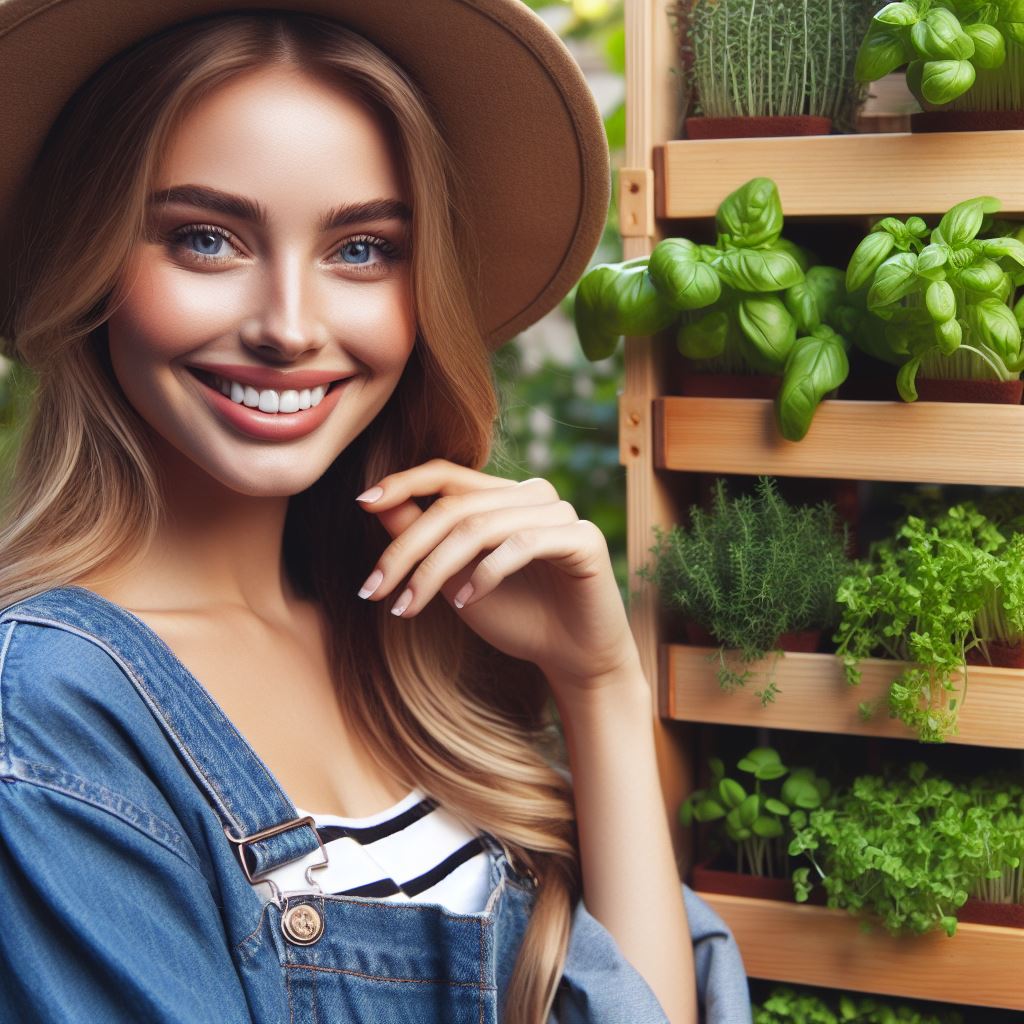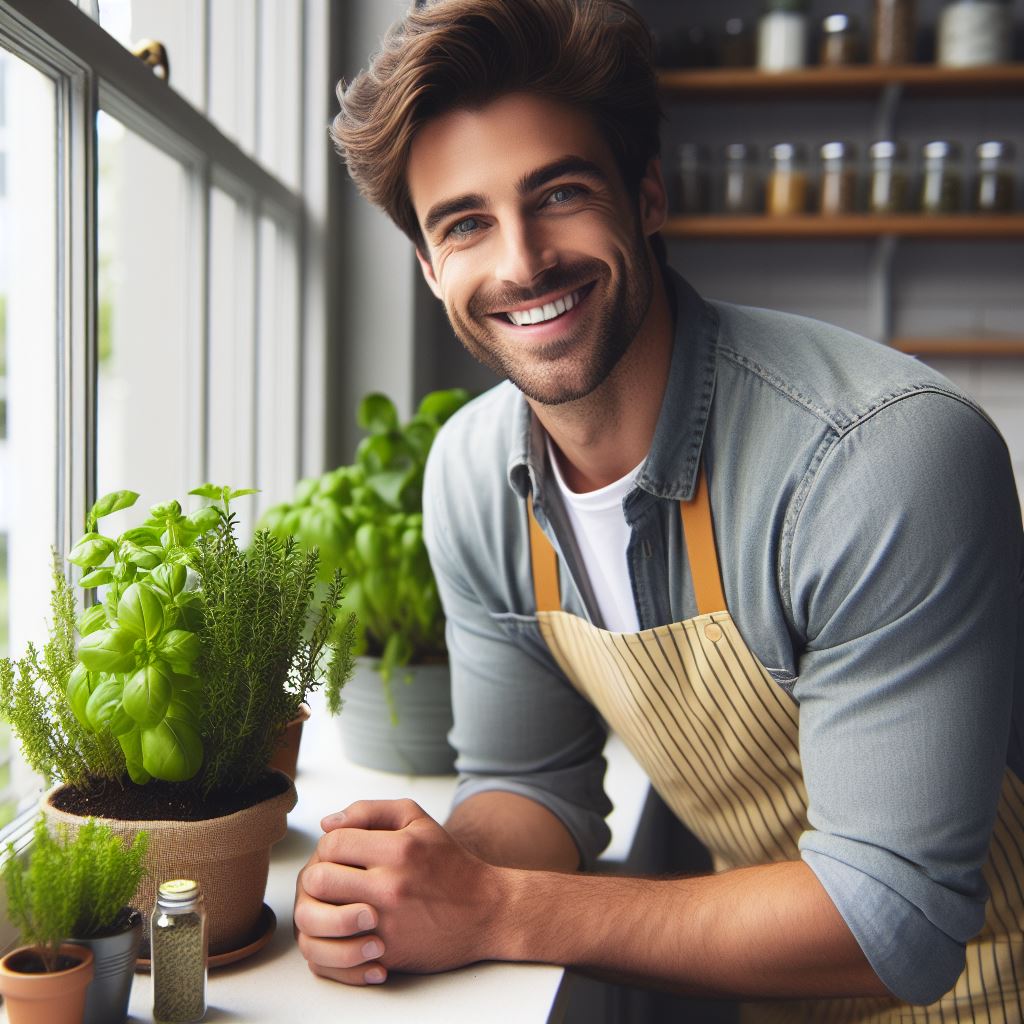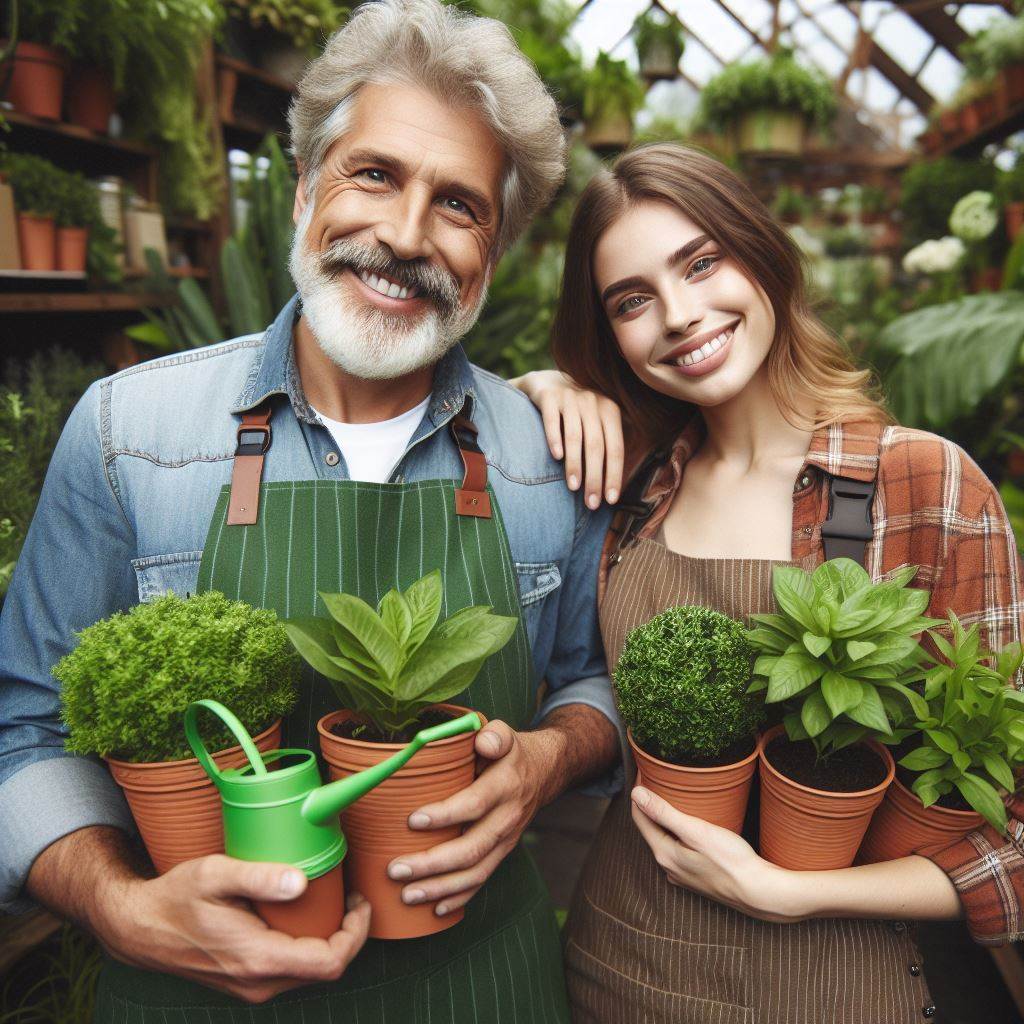Introduction
In small spaces, container herbs thrive, bringing fresh flavors and aromatic scents.
Cultivating herbs in pots offers convenience and versatility. Imagine stepping onto your balcony, greeted by a fragrant oasis of basil, rosemary, and mint.
With container herbs, you can easily access fresh ingredients for culinary delights.
Whether you have a tiny balcony or a compact patio, container herbs offer a solution.
No more trekking to the store for a few sprigs of herbs; your garden provides.
Experience the joy of gardening, even in the confines of urban living. Transform your space into a lush haven of culinary delights.
Let the vibrant hues and enticing fragrances of herbs captivate your senses. Embrace the simplicity and beauty of container gardening.
Discover the pleasure of nurturing your own little green sanctuary. Join us on a journey to explore the world of container herbs.
Elevate your gardening experience and spice up your life.
Choosing the Right Containers
Importance of selecting suitable containers for herb growth
Choosing the right containers is crucial in ensuring the success of your container herb garden.
The proper containers will provide the necessary support, space, and moisture levels needed for healthy herb growth.
Additionally, selecting suitable containers will also enhance the overall aesthetic appeal of your small garden.
Key factors to consider when selecting containers
When choosing containers, several factors need to be considered.
Firstly, the size of the container is essential to accommodate the herb’s root system adequately.
It is crucial to choose containers with enough depth and width to allow the roots room to grow.
The material of the container is another vital aspect to take into account.
Opt for containers made of porous materials like clay or ceramic, as they allow for proper drainage.
Good drainage is essential for preventing root rot and maintaining optimal moisture levels for the herbs.
Drainage holes are critical in container selection.
Ensure that the containers you choose have adequate drainage holes to prevent waterlogging and promote air circulation around the roots.
Proper airflow is essential for the health of the plant and preventing diseases caused by excess moisture.
Consider the mobility of the containers as well.
Lightweight containers with handles or wheels make it easier to reposition them if needed and simplify maintenance tasks such as watering and cleaning.
Furthermore, it is vital to choose containers that are compatible with the overall style and theme of your garden.
The containers should complement the aesthetic appeal you want to achieve.
Specific container options for different herb varieties
Specific herbs may require specific container options to thrive. For small herbs like basil, parsley, or thyme, 6 to 8-inch pots with good drainage are suitable.
Taller herbs such as rosemary or lavender require deeper pots, at least 12 inches in height, to accommodate their long roots.
If you have limited space, hanging baskets or wall-mounted planters are ideal for herbs like mint or trailing rosemary.
They save space while providing an excellent growing environment.
For those who prefer herbs on their windowsills, rectangular window boxes or compact pots that fit well on windowsills are perfect choices.
They allow you to enjoy fresh herbs conveniently near your kitchen.
Lastly, consider vertical options for herbs like oregano or sage. Vertical planters, vertical gardens, or wall planters can maximize space utilization while adding a unique visual element to your garden.
In fact, choosing suitable containers is crucial for the success of your container herb garden.
Consider size, material, drainage, mobility, and compatibility factors when selecting containers.
Tailor your choices to specific herb varieties to ensure optimal growth.
By choosing the right containers, you’ll create a thriving and visually pleasing small garden filled with aromatic and flavorful herbs.
Read: Tiny Soil Science: Perfecting Pot Mixtures
Selecting the Right Herbs for Containers
Why certain herbs are better suited for container gardening
Container gardening offers numerous benefits, particularly for individuals with limited space.
When it comes to herbs, certain varieties are more suitable for growing in containers.
This is because they have distinct characteristics that enable them to thrive in a confined environment.
Firstly, some herbs have shallow root systems, which makes them well-adapted to container gardening.
Their ability to grow in smaller spaces allows them to maximize the limited soil and nutrients present in containers.
Transform Your Agribusiness
Unlock your farm's potential with expert advice tailored to your needs. Get actionable steps that drive real results.
Get StartedSecondly, certain herbs are compact and have a bushy growth habit.
These herbs, when grown in containers, don’t sprawl or spread excessively, making them suitable for small spaces like balconies or windowsills.
Popular herbs that thrive in containers
- Basil: Known for its aromatic leaves, basil is a versatile herb that thrives in containers. It requires full sun, well-drained soil, and regular watering.
- Thyme: With its low-growing habit and delicate leaves, thyme is an excellent choice for container gardening. It prefers well-drained soil and moderate sunlight.
- Mint: Mint, with its refreshing fragrance and ability to fill up a container, is a popular choice for herb gardens. It needs regular watering and partial sun exposure.
- Parsley: Parsley is a biennial herb that grows well in containers. It prefers moist soil and partial shade, making it ideal for indoor herb gardens.
- Chives: Chives are easy to grow in containers and produce beautiful edible flowers. They require moderate sunlight and regular watering.
Brief descriptions and growing tips for each recommended herb
- Basil: This herb is known for its strong aroma and is used in various cuisines. It grows best in well-drained soil with full sun exposure. Pinch off the flowers to encourage leaf growth.
- Thyme: Thyme is a versatile herb that adds flavor to meat dishes, soups, and stews. It thrives in well-drained soil with moderate sunlight. Trim it regularly to maintain its bushy form.
- Mint: Mint is popular for its refreshing taste and is commonly used in beverages and desserts. It grows well in moist soil with partial sun exposure. Regular pruning prevents it from taking over the container.
- Parsley: Parsley is an essential herb in many recipes and is rich in vitamins. It prefers moist soil and partial shade. Harvest the outer leaves first to encourage growth.
- Chives: Chives are known for their mild onion flavor and are used as a garnish or in salads. They thrive in well-drained soil with moderate sunlight. Regularly trim the leaves to promote new growth.
In short, when selecting herbs for container gardening, consider their suitability for small spaces, such as shallow root systems and compact growth habits.
Popular herbs like basil, thyme, mint, parsley, and chives are excellent choices for containers.
By providing them with the right conditions, such as well-drained soil and appropriate sunlight, you can successfully grow these herbs and spice up your small garden.
Read: Portable Plots: Mobile Garden Strategies
Preparing the Containers
Necessary steps to prepare containers for herb planting
- Choose appropriate containers that are the right size for your herbs.
- Ensure the containers have proper drainage holes to prevent waterlogging.
- Clean the containers thoroughly to remove any dirt or debris.
- Inspect the containers for any cracks or damage and discard if necessary.
- Place a layer of rocks or pebbles at the bottom of the containers to aid in drainage.
- Position the containers in a suitable location with adequate sunlight.
How to clean and sanitize the containers effectively
- Wash the containers with warm water and mild dish soap.
- Scrub the inside and outside of the containers using a non-abrasive sponge or brush.
- Rinse the containers thoroughly to remove any soap residue.
- Sanitize the containers by soaking them in a mixture of 1 part bleach to 9 parts water for 10 minutes.
- Rinse the containers again with clean water to remove the bleach solution.
- Allow the containers to air dry completely before proceeding with planting.
Guidance on adding appropriate soil and creating suitable drainage
- Choose a high-quality potting mix that is well-draining and enriched with nutrients.
- Fill the containers with the potting mix, leaving some space at the top for watering.
- Avoid using regular garden soil, as it may not provide the necessary drainage.
- Consider adding perlite or vermiculite to the soil mix to improve drainage.
- Pack the soil gently to ensure it is firmly in place but not compacted.
- Create suitable drainage by ensuring the containers have sufficient drainage holes and using a well-draining soil mix.
By following these steps, you can ensure that your containers are properly prepared for herb planting.
Taking the time to clean and sanitize the containers and using appropriate soil with suitable drainage will provide a healthy environment for your herbs to thrive.
Read: Efficient Herb Gardening in Mini Plots

Planting and Caring for Container Herbs
Steps to plant herbs in containers effectively
- Choose suitable containers with good drainage.
- Select a quality potting mix that provides proper drainage and nutrients.
- Ensure herbs receive adequate sunlight for at least 6 hours per day.
- Start by filling the container with the potting mix, leaving some space at the top.
- Carefully remove the herb plants from their original pots, loosening the roots gently.
- Place the herbs in the container, spacing them according to their growth requirements.
- Fill the remaining space with potting mix, pressing gently to secure the plants.
- Water the herbs thoroughly, allowing excess water to drain out of the container.
- Label the herbs to easily identify them.
- Place the container in a suitable location, ensuring it receives adequate sunlight and protection from extreme weather conditions.
Proper watering techniques and sunlight requirements
- Water the herbs regularly, ensuring the soil is moist but not waterlogged.
- Avoid overwatering, as it can lead to root rot and other diseases.
- Check the moisture level by sticking your finger about an inch into the soil.
- If it feels dry, water the herbs thoroughly until the excess water drains out.
- Provide a consistent water supply, especially during hot and dry periods.
- Ensure the herbs receive at least 6 hours of direct sunlight a day for optimal growth.
- If sunlight is limited, consider placing the containers near windows or using artificial grow lights.
- Rotate the containers periodically to ensure even sunlight exposure on all sides.
Tips for fertilizing, pruning, and maintaining healthy herbs in containers
- Fertilize the herbs every 4-6 weeks using a balanced organic fertilizer.
- Follow the instructions provided on the fertilizer packaging for the appropriate dosage.
- Prune the herbs regularly to encourage bushier growth and prevent them from becoming leggy.
- Trim off any damaged or diseased leaves or stems to maintain plant health.
- Harvest the herbs frequently to promote new growth and prevent them from flowering.
- Regularly inspect the herbs for signs of pests or diseases, and take appropriate measures to control them.
- Avoid overcrowding by removing any excess herbs or transplanting them to bigger containers.
- Monitor the soil moisture levels and adjust watering accordingly during different seasons.
Read: Apartment Herb Gardening: Freshness on Hand
Troubleshooting Container Herb Issues
Common challenges and problems faced while growing herbs in containers
- Poor drainage causing root rot.
- Inadequate sunlight leading to weak and leggy growth.
- Over or under-watering, stressing the plants.
- Poor soil quality resulting in nutrient deficiencies.
Solutions for issues like pests, diseases, and nutrient deficiencies
- Control pests by regularly inspecting the plants and using organic insecticides.
- Prevent diseases by providing proper air circulation and avoiding overcrowding.
- Address nutrient deficiencies by using organic fertilizers or compost to enrich the soil.
Preventive measures and organic remedies to maintain thriving herb containers
- Ensure containers have drainage holes to prevent waterlogged roots.
- Place the containers in areas with at least six hours of direct sunlight daily.
- Water the herbs when the top inch of soil feels dry, but avoid overwatering.
- Choose high-quality potting soil or mix compost with regular soil for better nutrition.
- Regularly prune and harvest herbs to enhance growth and prevent legginess.
- Inspect plants frequently for signs of pests or diseases and take immediate action.
- Encourage beneficial insects like ladybugs and lacewings to control pest populations.
- Rotate herb varieties in containers to prevent nutrient depletion and disease buildup.
- Use natural remedies like neem oil or garlic spray to combat common herb pests.
- Introduce companion plants like marigolds or basil to deter harmful insects.
- Test the soil’s pH regularly and adjust it as needed to maintain optimal nutrient uptake.
- Employ organic fertilizers such as compost tea or fish emulsion for regular feeding.
Harvesting and Using Container Herbs
Best Practices for Harvesting Herbs from Containers
- Ensure herbs are mature and have enough leaves before harvesting.
- Use clean, sharp shears or scissors to cut herbs just above a leaf node.
- Harvest herbs in the morning after the dew has dried but before the sun becomes too hot.
- Regularly pinch or trim herbs to encourage bushier growth and more leaves to harvest.
- Avoid harvesting more than one-third of the plant’s foliage at a time to promote healthy growth.
Different Ways to Use and Preserve Fresh Herbs
- Use freshly harvested herbs in salads, sandwiches, or as garnishes for a burst of flavor.
- Create flavored oils or vinegars by infusing herbs in a bottle with olive oil or vinegar.
- Dry herbs by hanging them upside down in a well-ventilated area; store in airtight containers.
- Freeze herbs in ice cube trays with a little water or oil for convenient use in soups or sauces.
- Create herb butter by mixing chopped herbs with softened butter; freeze for later use.
Creative Recipes and Inspiration for Incorporating Homegrown Herbs
- Add fresh basil and cherry tomatoes to mozzarella for a flavorful Caprese salad.
- Create a refreshing mint-infused lemonade by steeping fresh mint leaves in sugar syrup.
- Make a fragrant homemade tea by steeping dried chamomile flowers with lemon balm leaves.
- Incorporate rosemary into bread or pizza dough for a delightful aroma and taste.
- Use lavender flowers to infuse sugar and create a unique ingredient for baking or cocktails.
By following these best practices for harvesting herbs from your containers, you can ensure a bountiful supply of homegrown flavors throughout the year.
From using fresh herbs in everyday cooking to preserving them for later use, there are numerous ways to harness the benefits of container herbs.
Get creative in the kitchen and experiment with different recipes and combinations to fully enjoy the vibrant flavors and aromas of your own homegrown herbs.
So go ahead, spice up your small garden with container herbs!
Conclusion
Container herb gardening revolutionizes even the smallest of spaces, offering a bounty of fresh flavors right at your fingertips.
By efficiently utilizing containers, you can cultivate a diverse array of herbs, from basil and mint to rosemary and thyme, enhancing the taste and nutrition of your meals while also adding aesthetic appeal to your surroundings.
I encourage you to embark on your own container herb gardening journey.
Whether you have a sprawling garden or just a tiny balcony, container gardening opens up endless possibilities for growing your own herbs and enjoying the satisfaction of harvesting your own ingredients.
Let’s continue this conversation in the comments below!
Share your successes, ask questions, or offer tips and advice to fellow herb enthusiasts.
Together, let’s foster a community of passionate container herb gardeners and cultivate thriving green spaces wherever we can.




